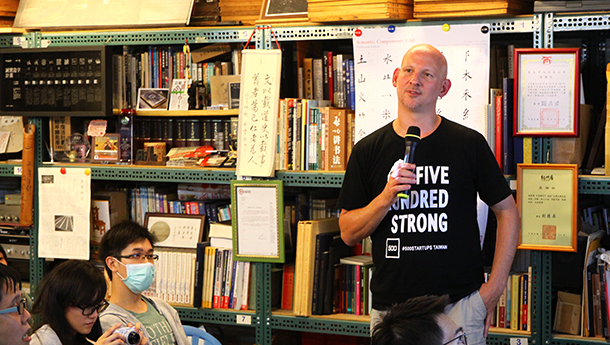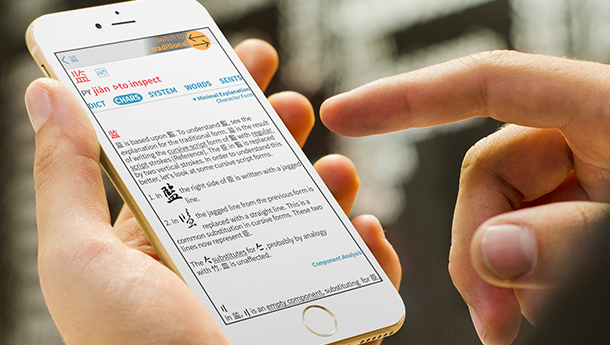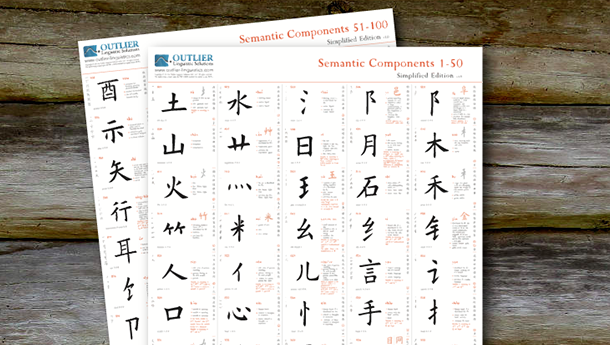The Outlier Dictionary of Chinese Characters: A useful tool for learners and translators

In early January, John Renfroe, one of the brains behind the Outlier Dictionary of Chinese Characters, visited the Gengo office as a guest speaker for our bi-weekly lunch and learn series where speakers share their thoughts on the latest in technology, translation, language learning, the startup scene as well as other exciting topics.
John is one of the founders of Outlier Linguistics Solutions, the team responsible for the successful KickStarter campaign that was launched in May 2015 and has collected over $91,000 worth of pledges to date from enthusiastic backers worldwide. The campaign has also gained international media attention and has been featured in the China Economic Review, Tech in Asia/ Mashable and Tech Crunch, among others. In 2015, the company was named in the South China Morning Post as one of Taiwan’s five most promising startups.

This upcoming language tool will benefit learners and translators of the world’s most widely spoken language, which has almost 1.2 billion speakers globally. Chinese is one of the most difficult languages to learn mainly due to the thousands of characters with variations in different provinces and regions.
How it works
The Outlier founders created a novel and efficient way to alleviate the laborious process of learning Chinese characters. Outlier Linguistics Solutions offers a dictionary that breaks down characters into “components” rather than radicals.
The team of linguists identified which components give the character its sound, which ones give it meaning, and how the multiple components function together.
The form, sound, meaning and empty semantic components could help learners or translators better understand the characters’ true origins, evolution and etymology. This could ease memorization and increase retention for learners.
Compared to other digital dictionaries, the Outlier version efficiently explains how Chinese characters work as a system, and not just a bunch of disconnected characters that can be mastered with a mnemonic or photographic memory.

How it can help translators
This tool can serve as a reliable reference guide to improve the translation process. By helping translators improve their speed and reduce the time spent on looking up character meanings, they can focus on the translation.
During the Q&A session, John addressed questions regarding possible quality issues for Chinese projects. He pointed out the differences between Hong Kong traditional Chinese and Taiwanese traditional Chinese. Hong Kong has a more formal writing style than Taiwan due to the language education focus and dialects spoken in each country. Hence, if a Taiwanese translator works for customers based in Hong Kong, translations and meanings could be comprehensible, but a Hong Kong native speaker might notice certain stylistic differences and slight character differences.
John also had some advice for Chinese translators. He noticed that newer translators tend to try and translate a sentence while reading it, which can lead to parsing errors. For example, the phrase 在發展中國家, should be parsed 在發展中‧國家, literally “in-development-middle countries” or more naturally, “developing countries”, instead of 在發展‧中國‧家, literally “in-development China home” or “developing Chinese homes”. To avoid such errors, translators must first fully understand the entire sentence and context before committing to the translation.
The Outlier Dictionary stands out from the crowd by answering the question, “Why does this character look like that?” A deeper understanding of characters can maximize long-term recall, efficiency and predictive ability for learners, and facilitate accuracy, consistency and better localization for translators.

The Outlier Dictionary of Chinese Characters will be released in mid-2016 through Pleco, the most downloaded Chinese-English mobile dictionary. The team recently produced downloadable Simplified Chinese posters containing 50 semantic components. In the future, the company also hopes to distribute on other platforms, publish a book and created specialized versions for Cantonese and Japanese.
Want to become a Gengo translator?


